Strandvägen is a boulevard created that was created in the second half of the nineteenth century in Stockholm’s Östermalm district. The boulevard, which looks out over the water, is lined with grand, almost palatial buildings that were designed by some of the top architects of the day.
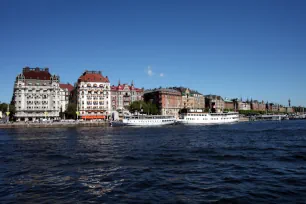
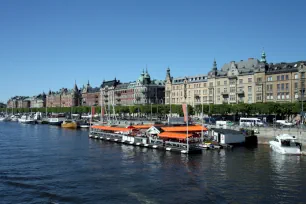
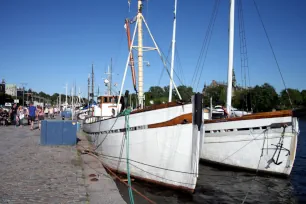
Strandvägen (‘beach road’) has a length of 1200 meters (0.75 mi) and runs east from Nybroplan to the Djurgården Bridge.
History
In the mid-nineteenth century, Strandvägen was known as Ladugårds Strandgata (Barn beach street). It was an unappealing, muddy street with dilapidated houses built along an old wooden quay. When the Nibrokajen, the quay on the east side of the street was in need of repair, the suggestion was made to build a new, wide and modern quay all the way to the Djurgården Bridge.
This plan revived an old idea to turn the Ladugårds Strandgata into a prestigious boulevard, Strandvägen. In 1861, after long discussions, the king approves the creation of Strandvägen. The goal was to create a street ‘unparalleled in Europe’, and have it completed before the inauguration of the Arts and Craft Exhibition of 1897, held in Djurgården.
Construction started the following year and fifteen years later, with the planting of three rows of lime trees, the thirty-five-meter wide street was completed. Strandvägen became one of the city’s most desirable addresses, and developers built magnificent mansions designed by some of the country’s best architects. Soon, many of Stockholm’s most affluent citizens moved to this new street.
A Walk along Strandvägen
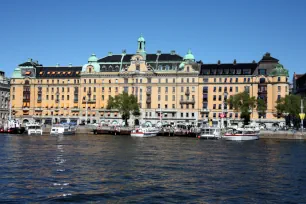
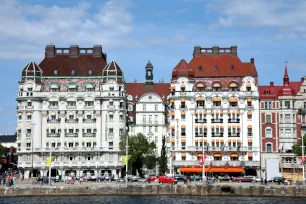
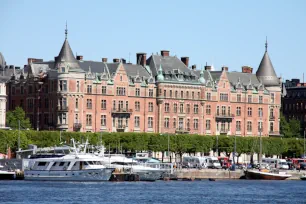
Strandvägen is one of the most pleasant boulevards in the city thanks to its wide waterfront esplanade where one walks along cafés and picturesque boats. The other side of the tree-lined boulevard boasts magnificent architecture, with one palatial building after another.
Starting at Nibroviken bay, the first building, at nrs 1-5, is one of the largest buildings with a 127 meter (417 ft) long facade. It actually consists of three separate buildings, all designed by the same architects: G. Hagström and F. Ekman, who completed the building in 1904. Next are two prestigious hotels: the Hotel Esplanade at nr 7a and the exclusive Hotel Diplomat at nr 9. Both were built around the turn of the twentieth century in the then popular Jugendstil style.
At nrs 29-33, further towards Djurgården, is Bünsowska Huset, completed in 1888 and the most impressive of all buildings at Strandvägen. The architect, Isak Gustaf Clason, was inspired by the architecture of the castles of the Loire Valley in France when he designed this magnificent brick building with turrets and round towers.
Clason designed two more buildings along the boulevard: the Italianesque Thaveniuska Huset at nrs 19-21, completed in 1885 and the Von Rosenska Palatset (Von Rosen Palace) at nr 55, built in 1887 in French mansion style. Clason’s designs set the tone for the rest of the street, and developers hired top architects to build equally grand buildings. The most prolific architect was Johan Laurentz, who designed elegant houses at nrs 15, 17 and 35-41.
Strandvägen ends at the Djurgårdsbron, the most ornate bridge in Stockholm. It was built to impress visitors of the Arts and Craft Exhibition in Djurgården, a former royal hunting ground. The bridge is decorated with large statues of Nordic gods.

